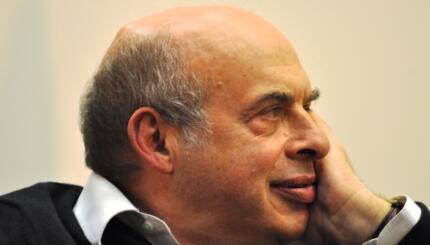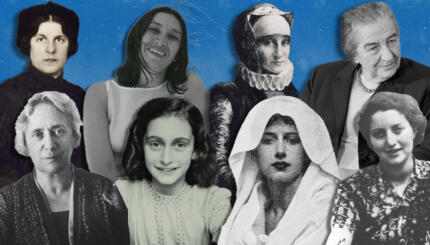Reprinted with permission from the author.
Subjects Secular and Sacred
Education in Muslim countries, where the majority of Jews lived in the medieval period, included not only Hebrew, Bible, and but also the whole range of secular learning and even religious subjects (the Koran, at least) studied by Muslim pupils. Jewish children learned either in a school attached to, or part of, the synagogue or in a private schoolwhich was often the house or rented room of a teacher. Parents paid tuition, which was a major expense, and the community paid for the education of orphans and poor children.
With regard to customs previously mentioned as to the beginning of biblical instruction, age of instruction, and so on, these generally applied also in Jewish communities in Muslim countries. Private letters from the Cairo Genizah show that most common people in Egypt and North Africa had their sons educated at least until the age of thirteen, and Arabic as well as Hebrew reading and writing ability was a standard part of that education. [A genizah is a place where unusable sacred writings were stored in order to preserve them from desecration.] One father wrote to his wife: "We are not honored by the peoples [Gentiles] except by reason of knowledge and what has been established in our memories from childhood … except for knowledge, a man is not worth a penny, even if he comes from a distinguished family or from heads of the academies … let no one belittle the merit of the teacher for he works very hard".
Reading, Writing and Arithmetic
Hebrew writing was also an important part of the educational process, and in fact students wrote “collections” (mahberot) containing the weekly biblical readings that they learned, rather than learning from complete texts of the Bible. Children were

Help us keep Jewish knowledge accessible to millions of people around the world.
Your donation to My Jewish Learning fuels endless journeys of Jewish discovery. With your help, My Jewish Learning can continue to provide nonstop opportunities for learning, connection and growth.
taught first the "alef‑bet” [alphabet] and then reading and writing combinations of letters with vowels. One document [from the genizah] has a writing game for children, in which the letters were given different colors and the teacher wrote the outlines of the letters that the child was to fill in with the correct color (the first coloring book in history?). Another had drawings of snakes with animal heads, the Star of David, and other symbols. Later, students in yeshivot [academies] also wrote summaries of what they studied and novellae of their own, just as was the custom in the French and German yeshivot.
Mathematics was learned often even before the student began lessons in writing. Of course, this study was in Arabic, since the first mathematics and astronomy in Hebrew were those of Abraham b. Hayya (ca. 1065‑ca. 1136) in northern Spain. [Abraham bar Hayya was among the first and most important of the medieval Jewish mathematicians and scientists. He lived and wrote in Barcelona.]
As noted elsewhere here in articles dealing with Muslim communities, Jews in these countries mastered Arabic very soon after the Muslim conquests; in many cases they knew Arabic better than the indigenous converts to Islam. Jewish boys were allowed to study Arabic, and in many cases even Qu’ran, together with Muslim boys (In many Muslim cities the school was attached to the mosque, just as the Jewish school was to the synagogue; but in other places instruction was in the home of a teacher or even in the marketplace or street).
Syllabus: Physics, Optics, Philosophy, Music Theory, Astronomy and Medicine by Age 18 (or Younger)
Curiosity about the great body of scientific and philosophical knowledge available in the Muslim world soon led to a desire among Jews to acquire this knowledge. To that end, Jewish boys also studied, again together with Muslims, the secular sciences. These included mathematics (algebra and geometry, Euclidean and non‑Euclidean, trigonometry, and later, rudimentary calculus), physics, optics, philosophy (ethics, theories of the soul, metaphysics; primarily Aristotelian philosophy and then increasingly the works of the great Muslim philosophers), music (theory), astronomy, and medicine. Following in the footsteps of Muslim philosophers, Jewish writers in the Muslim world… wrote on the “classification of sciences,” in reality an outline of the education curriculum here described.
These secular subjects, many of which today would be considered "advanced" study (if learned at all), were mastered by the age of eighteen or even earlier. The young pupil would learn each subject from a scholar who was a specialist in that area, and this usually necessitated travel to distant cities and even to other lands to learn with the greatest authorities. Maimonides himself, we know, as a youth learned astronomy with students of the greatest astronomer in Muslim Spain, Ibn Aflah of Seville. [Maimonides (1138-1204) is generally acknowledged to be the greatest Jewish thinker, Talmudist, and codifier in the Middle Ages.] The student would receive a kind of diploma at the conclusion of his studies with each scholar, listing the books he had mastered and attesting to his proficiency.
Just as in other lands, Jewish students, of course, were expected to learn the Bible, but also midrash and the Talmud, the growing literature of responsa of the geonim(written originally in Arabic and only gradually translated into Hebrew), and such legal compendia as the great work of Isaac al‑Fasi. [The geonim were heads of the yeshivot (academies) in the post-talmudic period.]
With the revival, or more correctly the invention, of Hebrew grammar in the tenth century and later, first in Fez in North Africa and then definitively in Muslim Spain, students also applied themselves diligently to mastery of grammar and proper Hebrew composition. At least in Muslim Spain, but probably also in Egypt and Yemen (where Hebrew poetry was highly regarded), young boys also were required to be expert in Hebrew as well as Arabic poetry. Indeed, we have Hebrew poetry composed by poets in adolescence, including Judah ha-Levy, Ibn Gabirol, and others.
What about the education of Jewish girls?
There is really no information on the education of Jewish girls in Muslim lands, although it is known that Muslim girls often received formal education, and some became important poets. There is extant only some Arabic poetry by Jewish women in Muslim Spain, and mention of the names of a few others in Arabic sources. Legend ascribes a Hebrew poem to the daughter of Judah ha‑Levy, but this is likely a myth. We know of no Jewish women who were scholars in Muslim or Christian Spain, such as the few mentioned in Germany and elsewhere. Women did, however, play an active role in hiring teachers for their sons and even in endowing schools, particularly in Spain.
The Medieval Jewish Ivy League
Older boys usually went on to study the Talmud in established yeshivot, just as in European countries. The most famous, of course, were the great academies in "Babylon” (Iraq), where the Talmud itself had been composed, and which continued under the leadership of the geonim until the end of the eleventh century.
Other famous schools included those of Qayrawan in North Africa, another later at Fez, and Fustat and Alexandria in Egypt. Goitein has mentioned the frequent travel by scholars from one to the other of such yeshivot, and even from country to country. [Shlomo D. Goitein, a historian of medieval Mediterranean society.] We find French rabbis in yeshivot in Muslim lands, as well as in Egypt and Baghdad. Indeed, the yeshivahof Qayrawan was established in the tenth century by a scholar from Italy. In al‑Andalus in Spain, the yeshivot first at Lucena and then Cordoba‑Granada won international renown. Later in Christian Spain, of course, there were numerous outstanding yeshivot headed by famous scholars.


